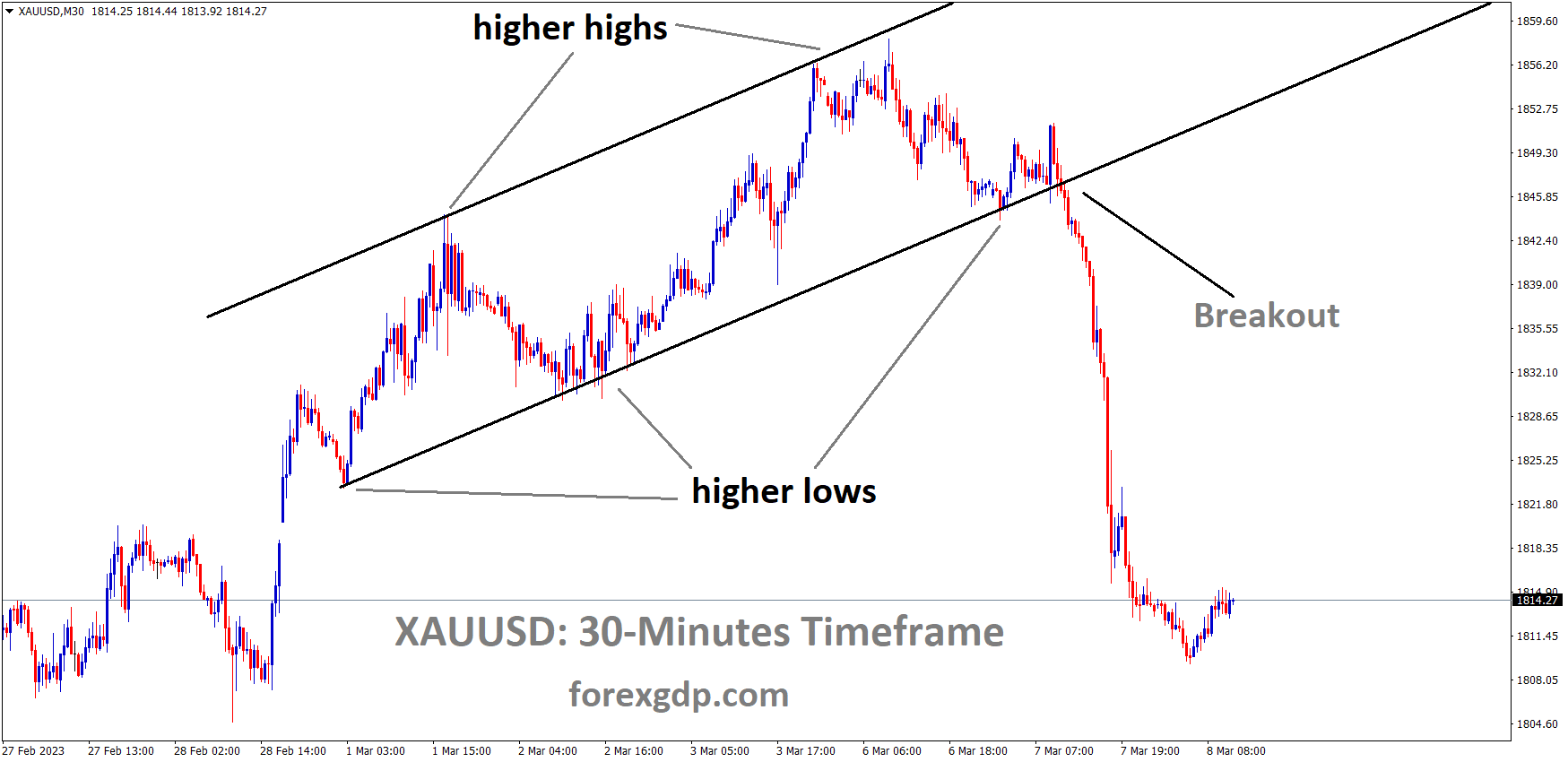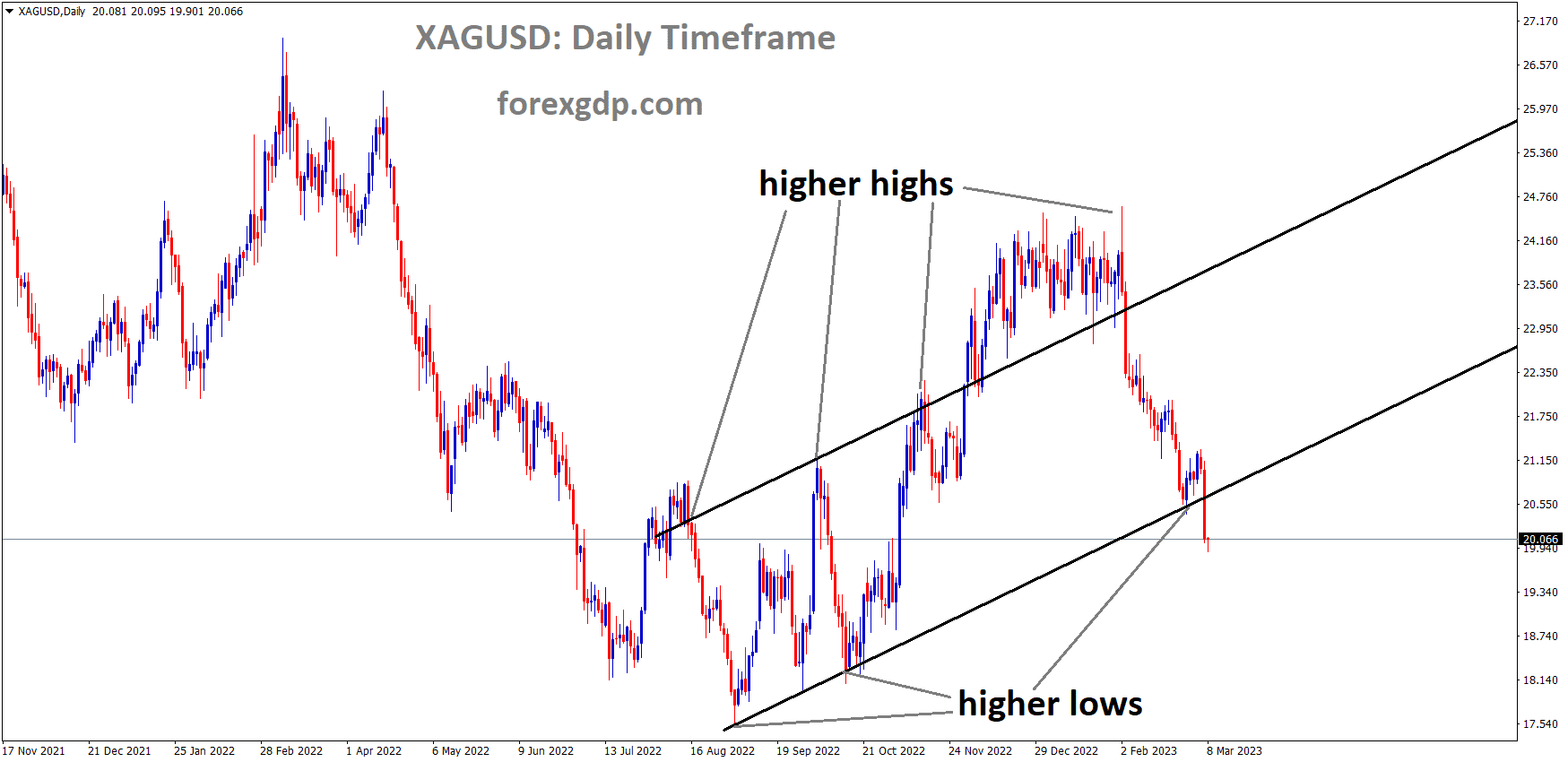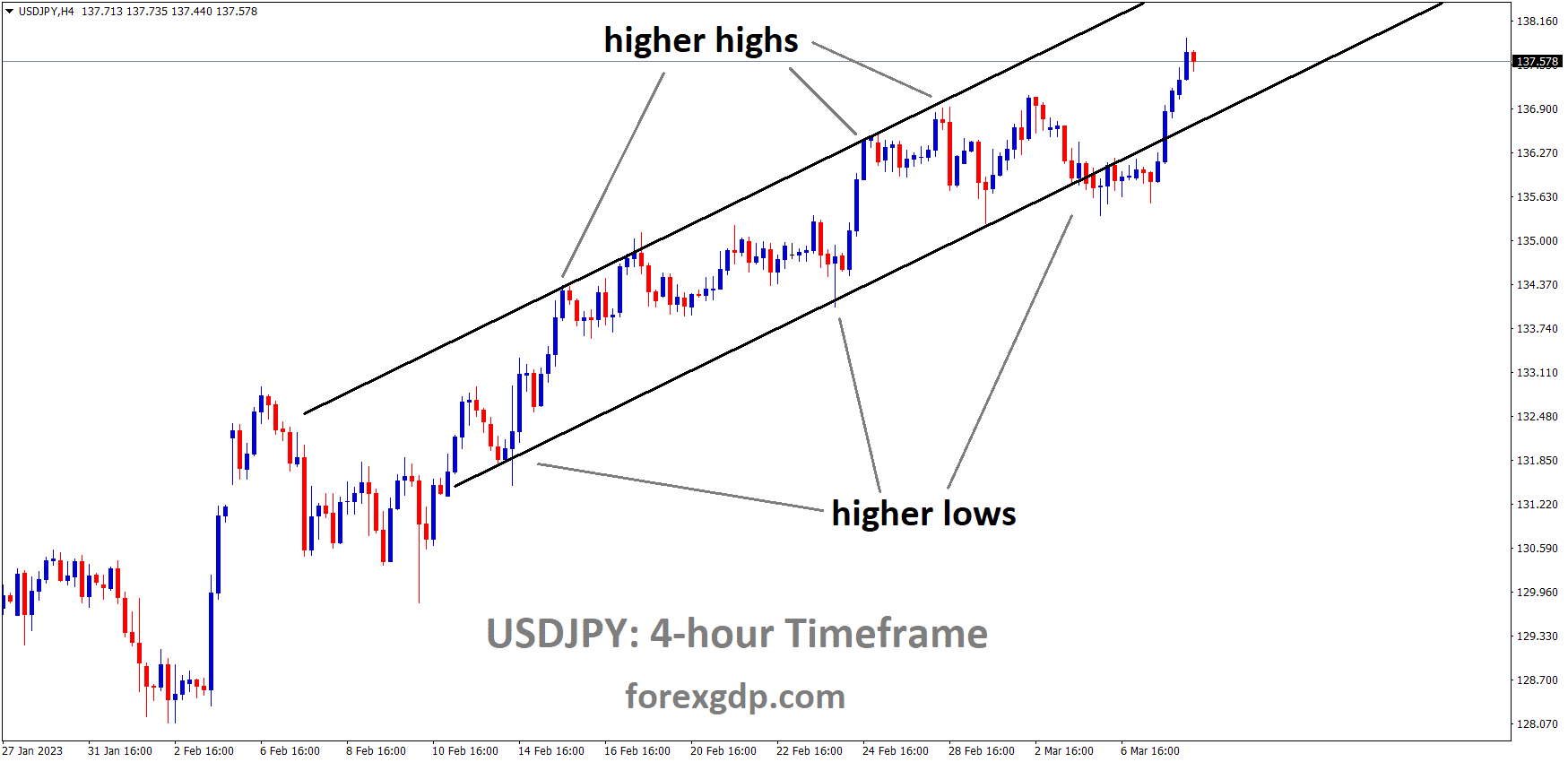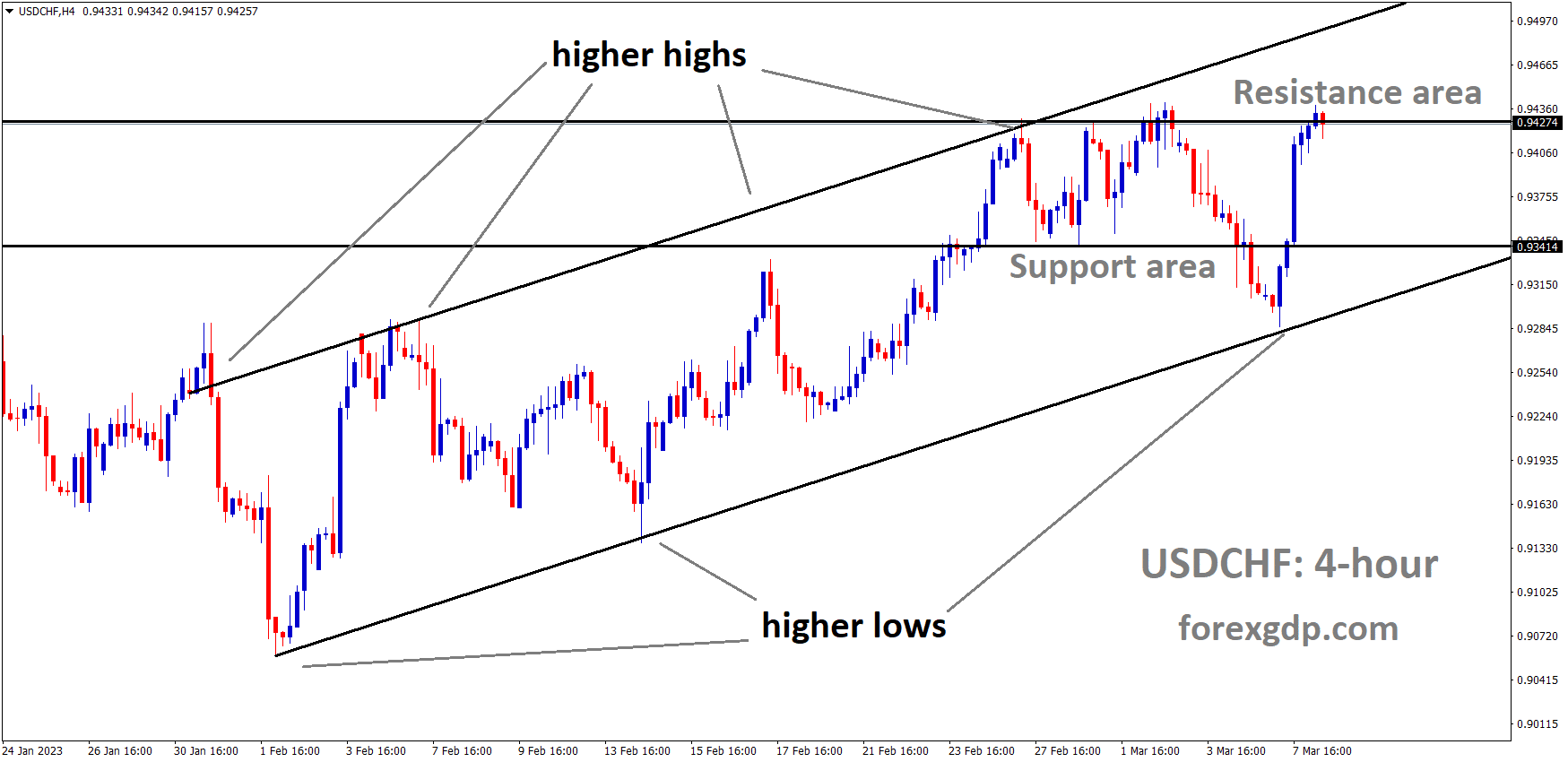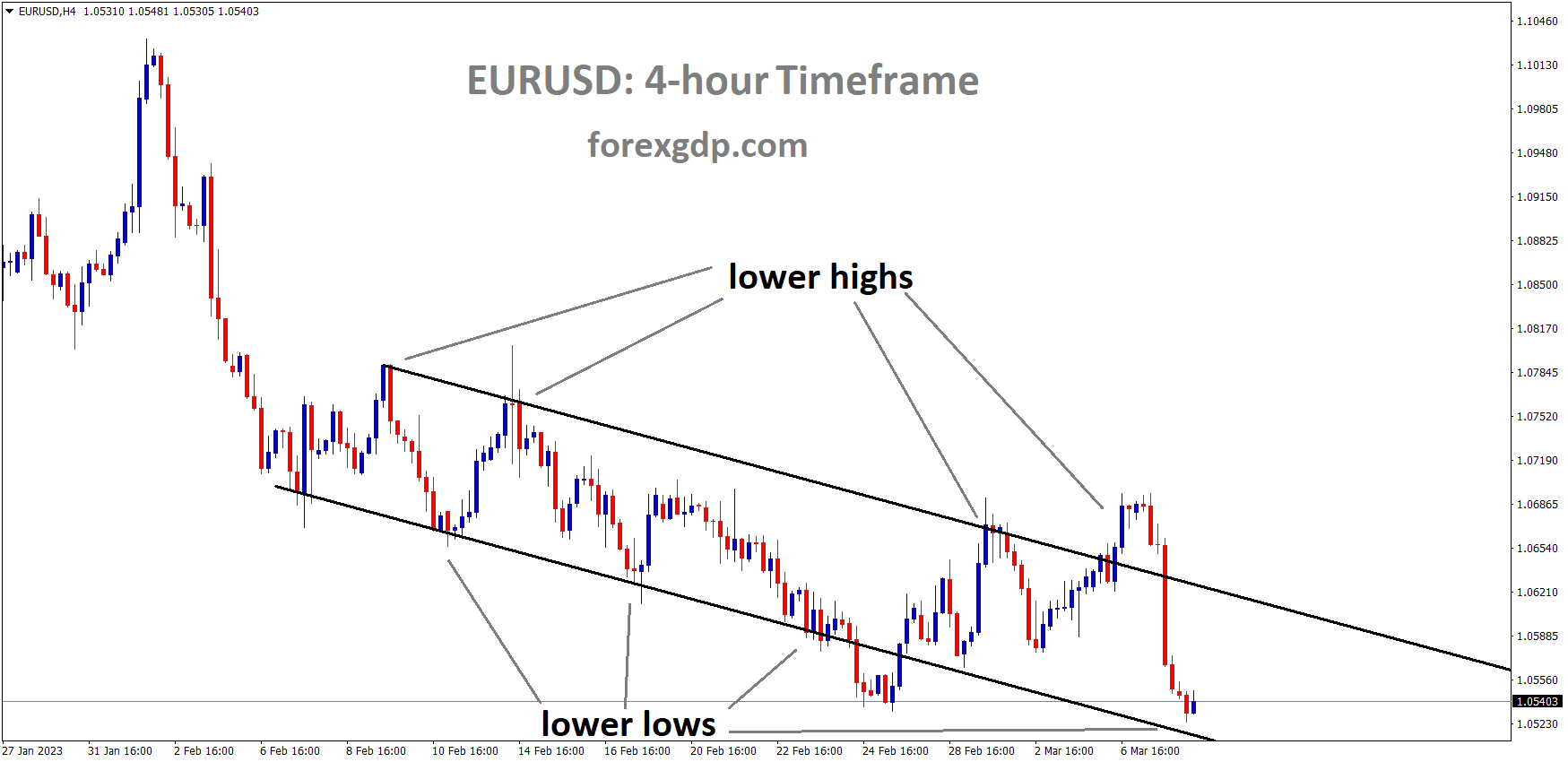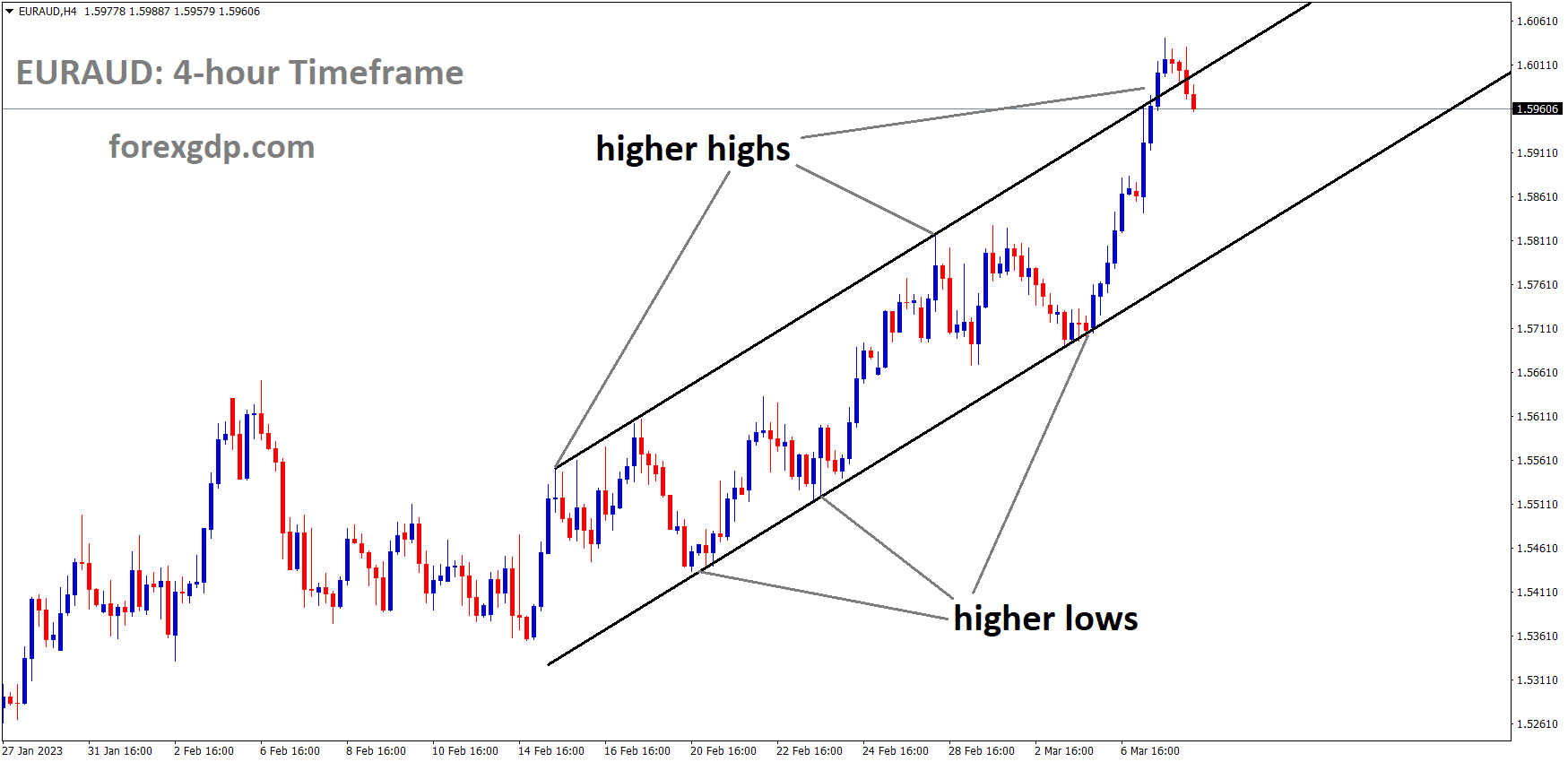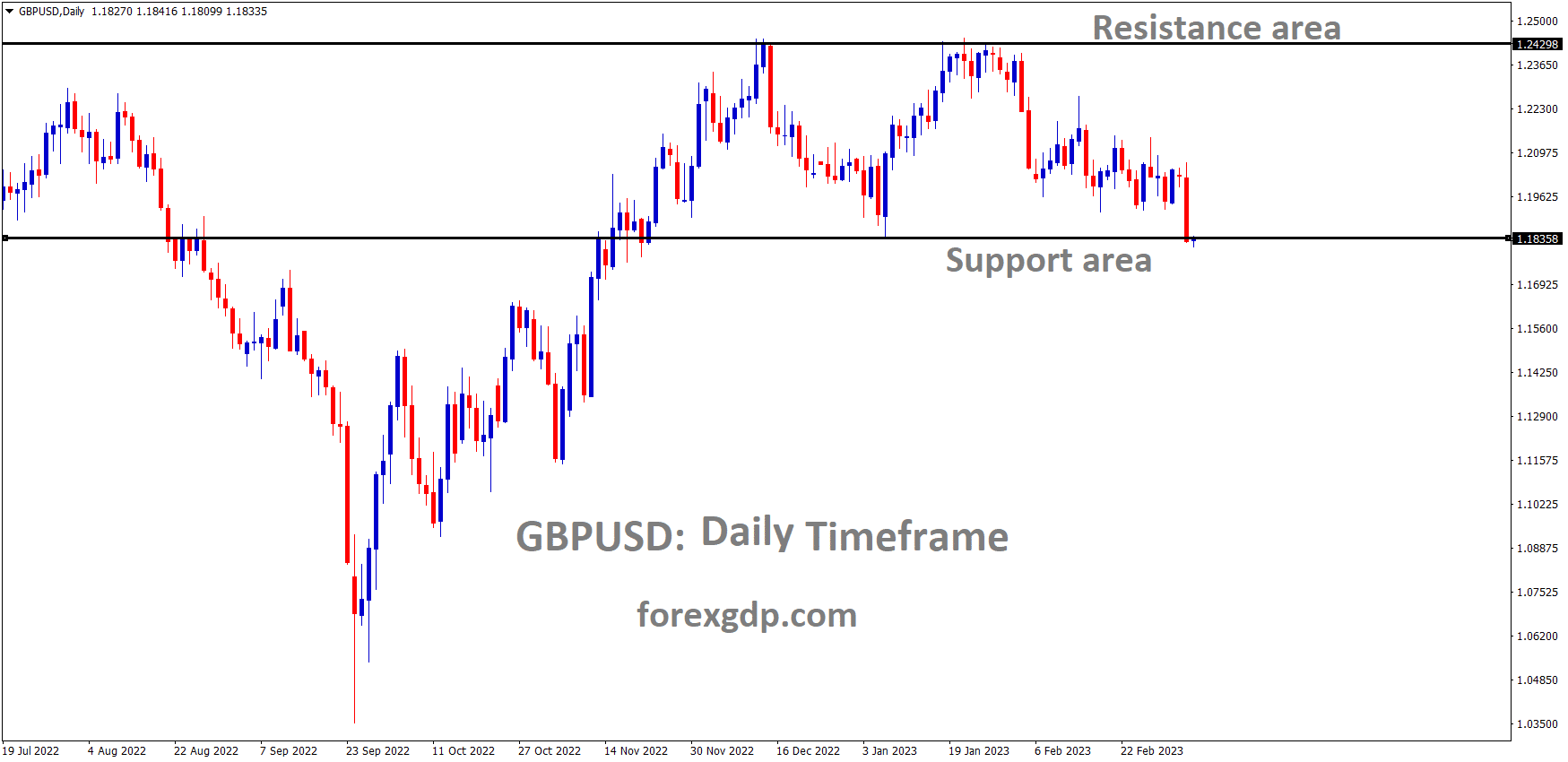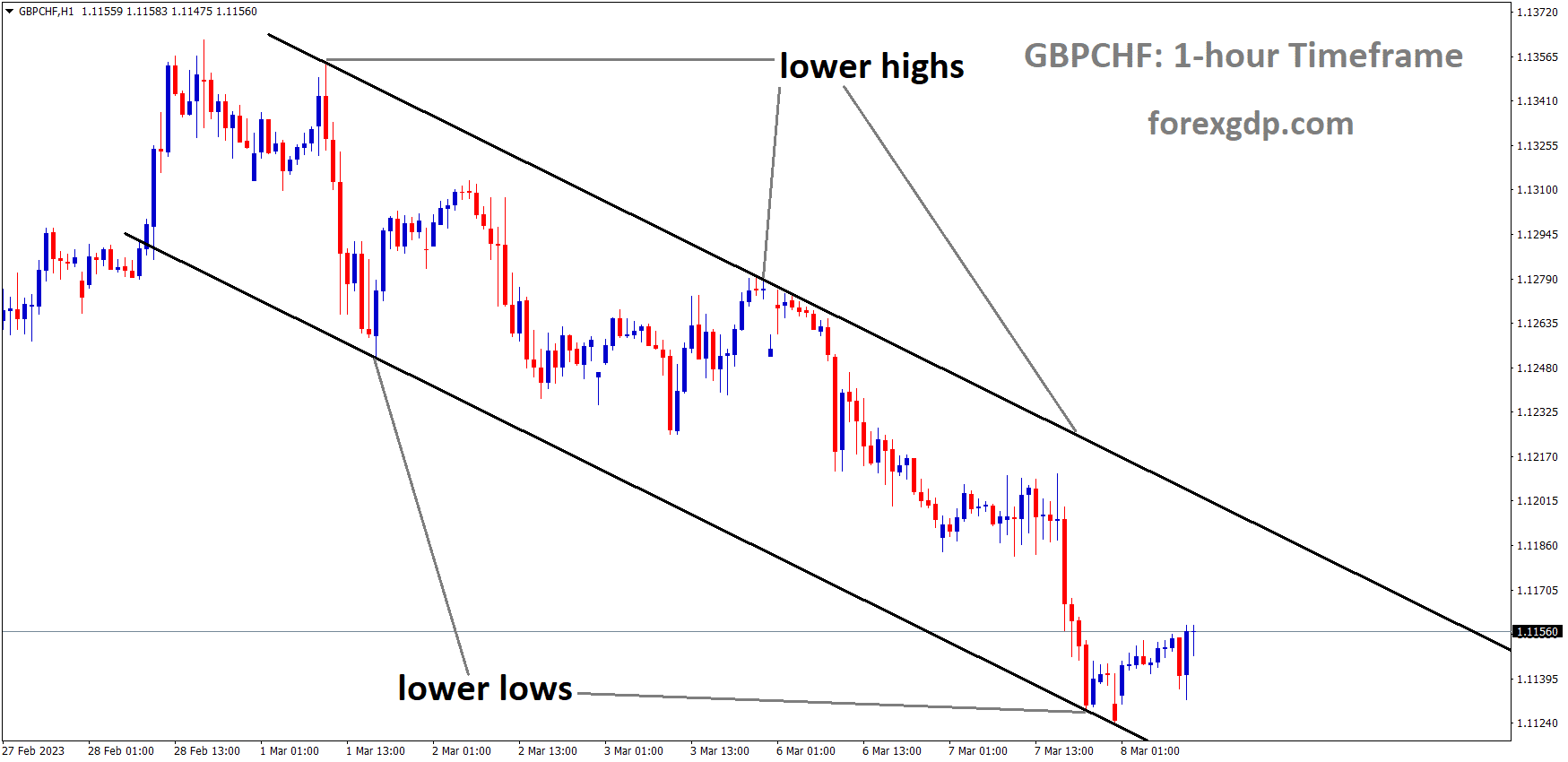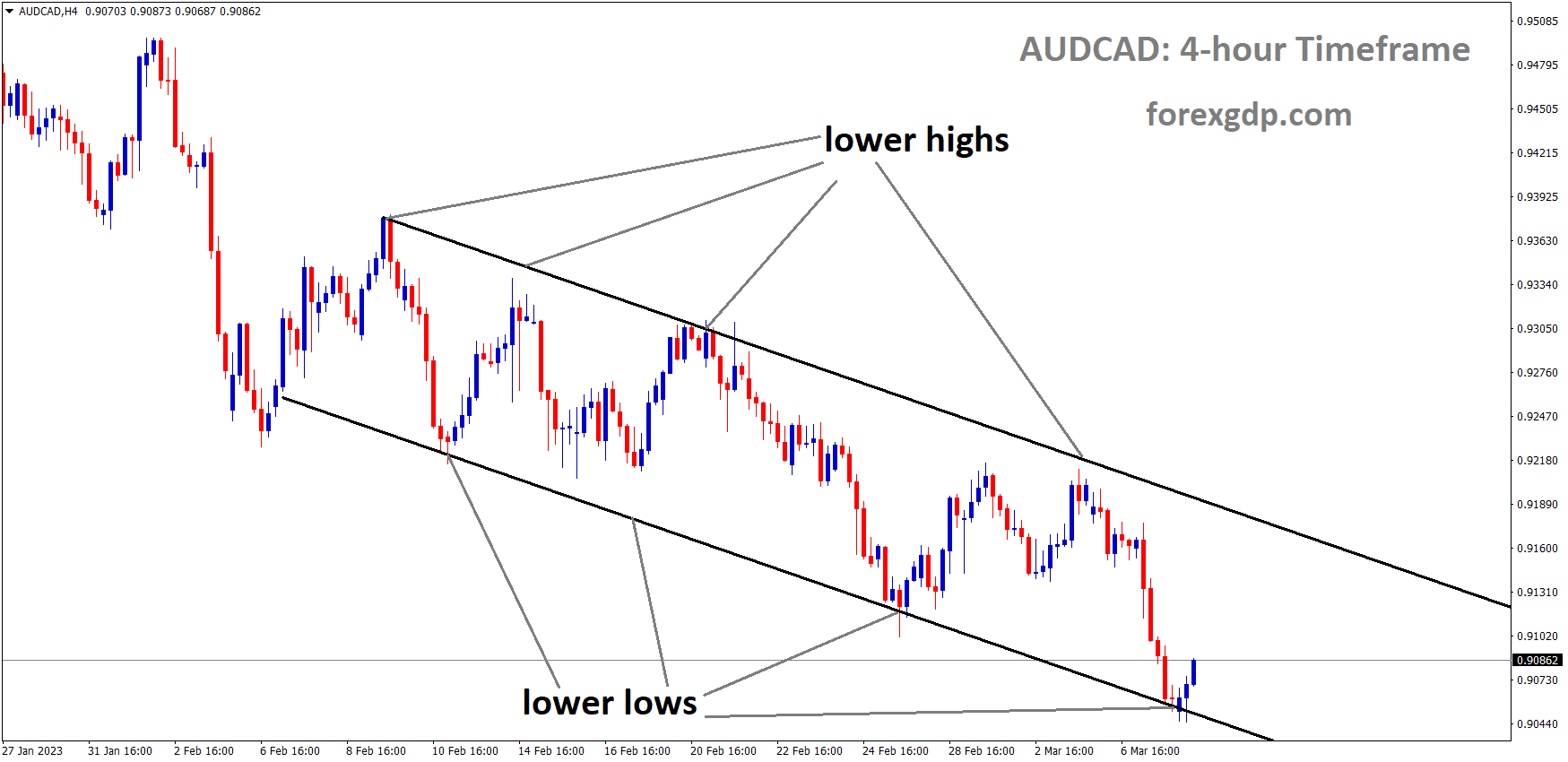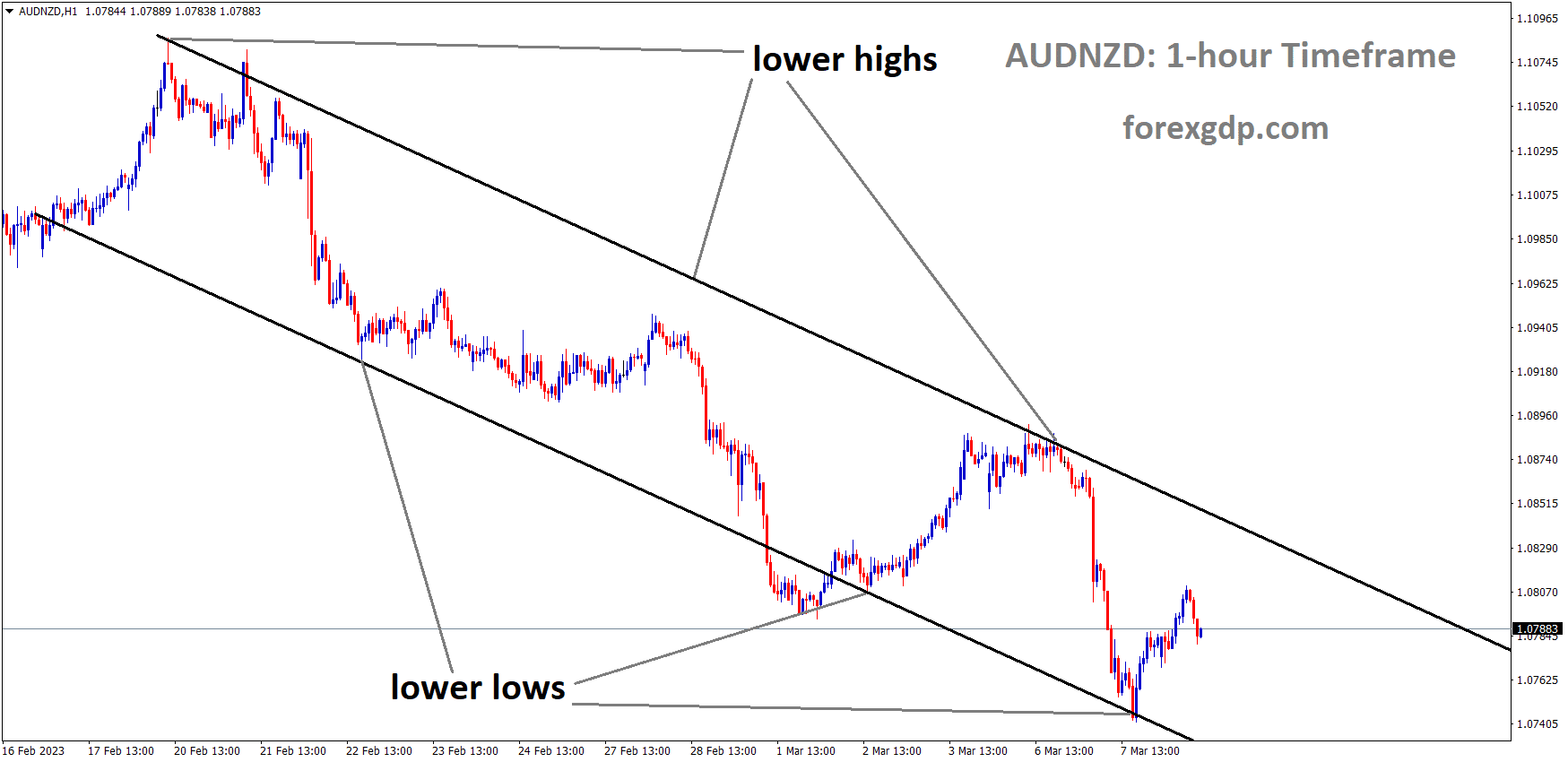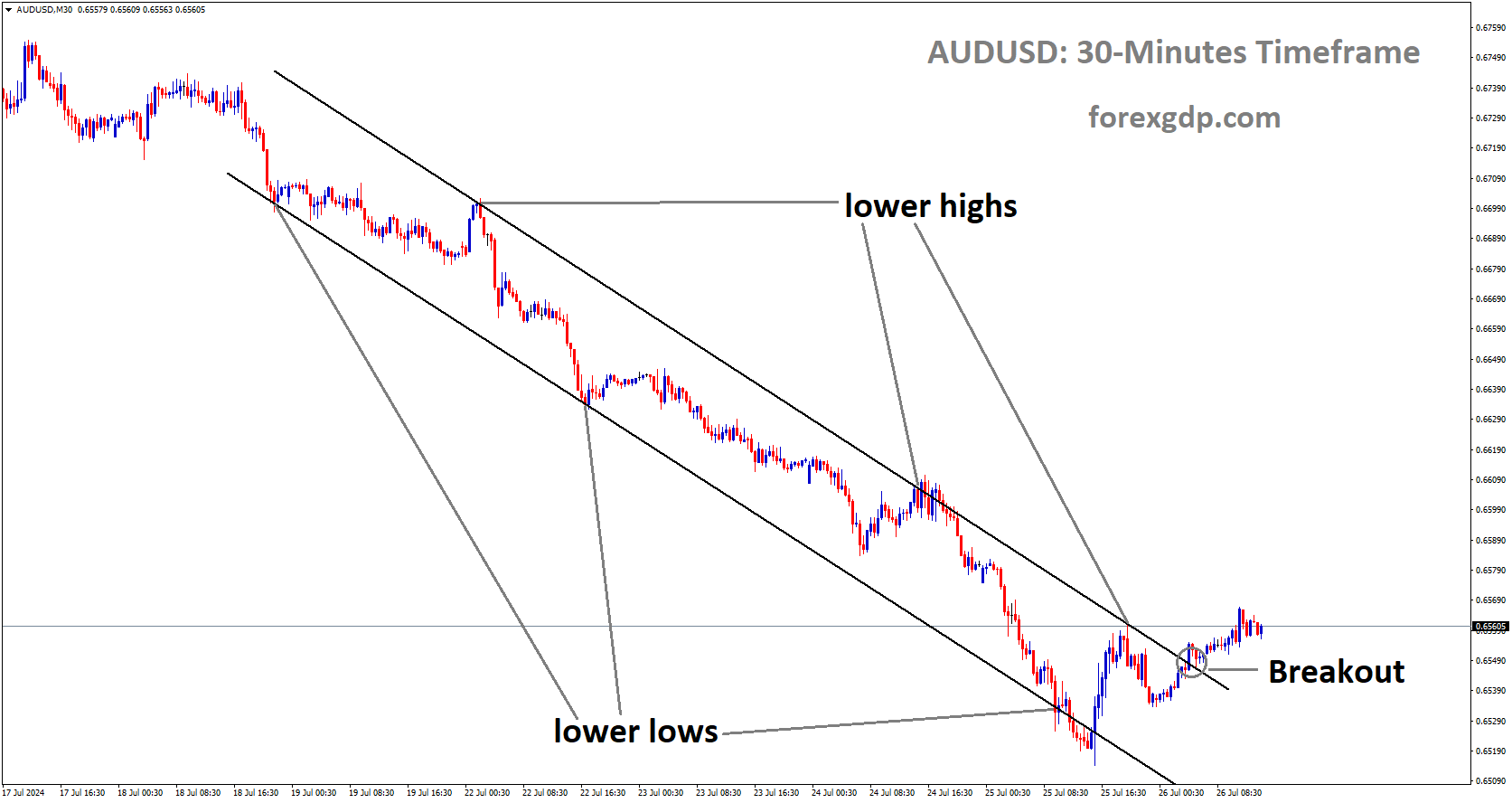GOLD Analysis
XAUUSD Gold Price has broken the Ascending channel in Downside.
As markets become choppy ahead of the important data and events planned for release on Wednesday, the price of gold has remained stagnant at around $1,812 despite briefly testing the weekly low earlier in the day. A light Asian calendar, reevaluation of the Federal Reserve’s (Fed) hawkish calls, and news about China, in addition to the pre-data anxiety, prod the XAU/USD bears after recording the biggest daily decline in a month. The US removal of the testing limits on travellers from China appears an instant challenge for the Gold bears amid silence after the storm. The discussions surrounding a quicker end to the Bank of Japan’s ultra-easy money policy, which in turn enabled the US bond bears to take a break as Tokyo is Washington’s top bond buyer, could be considered along the same lines. And during his semi-annual testimony before the US Congress on Tuesday, Fed Chair Powell shocked the market by signalling his readiness for additional rate increases and boosting the odds of a 50 bps Fed rate hike in March. The decision-maker pushed for “higher for longer” Fed rate forecasts, supported US Treasury bond yields, and hurt the stock market. The US Dollar and rates rose in response to his remarks.
SILVER Analysis
XAGUSD Silver Price is moving in an Ascending channel and the market has reached the higher low area of the channel.
The market’s worries about new US-China spats as US and Taiwan officials prepare for a summit, which could provoke Beijing, strengthened the US dollar’s upward trend. It should be noted that Fed Chair Powell’s hawkish comments increased the gap between the rates on US Treasury bonds with two and ten years remaining, which in turn exacerbated the recession’s problems and put downward pressure on the price of XAU/USD. The yield on US 10-year Treasury bonds increased by 0.15% on Tuesday, ending at about 3.97%, but the two-year counterpart gained 2.60% on the same day it reached its highest point since 2007—5.02% at the latest.
In light of this, the S&P 500 Futures are still choppy near the 3,988 mark after falling the most in two weeks the day prior. However, the difference between the coupons for 10-year and 2-year US bonds recorded the deepest yield curve inversion in more than 40 years the day before, maintaining it as of the time of publication. In order to provide new guidance before Friday’s US Nonfarm Payrolls, the US ADP Employment Change for February and the second round of Jerome Powell’s testimony before Congress will be crucial.
USDJPY Analysis
USDJPY is moving in an Ascending channel and the market has rebounded from the higher low area of the channel.
The USD/JPY pair acquires momentum for the second consecutive day on Wednesday and reaches its highest point since mid-December. The pair is currently trading in the 137.60 area, just above a technically significant 200-day Simple Moving Average, with a bid tone throughout the early European session (SMA). The overnight hawkish comments made by Federal Reserve Chair Jerome Powell drive the US Dollar to a three-month high, which is viewed as a tailwind for the USD/JPY pair. Powell indicated in his prepared remarks for his semi-annual congressional testimony that interest rates may need to rise more quickly and at a higher rate than previously anticipated. Powell added that the Fed is willing to increase the rate of rate increases to combat persistently high inflation and cautioned against prematurely easing policy.
As a result, odds on a rate increase of 50 basis points at the March policy meeting increase, supporting the current level of US Treasury bond rates. In fact, the yield on the benchmark 10-year US government bond is stable near the 4% mark, and the rate-sensitive 2-year Treasury note is near its highest level since 2007. Along with expectations that the Bank of Japan (BoJ) will maintain its ultra-loose policy settings, this continues to provide support for the greenback, which is driving the USD/JPY pair higher. Last week, prospective BoJ Governor Kazuo Ueda emphasised the need to maintain the ultra-loose monetary policy to support the fragile economy. Ueda also stated that the central bank has no plans to abruptly end a decade of enormous easing. This is a significant divergence from the Fed’s hawkish posture and supports the potential for the USD/JPY to appreciate further. However, the risk-averse sentiment benefits the JPY’s safe-haven status and caps further gains for the major.
Still, the big picture seems to be heavily in favour of bullish traders. Now, market participants anticipate the publication of the ADP report on private-sector employment and the JOLTS data on job openings on the US economic agenda. Aside from this, Powell’s second day of testimony before the House Financial Services Committee should influence USD price dynamics and give the USD/JPY pair a boost. The focus will then transition to Friday’s BoJ meeting and U.S. NFP report.
USDCHF Analysis
USDCHF is moving in an Ascending channel and the market has reached the horizontal resistance area of the minor Box Pattern.
Following a massive upward momentum following highly hawkish comments from Federal Reserve (Fed) chair Jerome Powell, the USD/CHF pair has moved its auction above the round-level resistance of 0.9400. The Swiss franc asset is anticipated to resume moving upward towards the key resistance level of 0.9435 as investors have supported the risk aversion theme despite strong chances that the Fed will raise rates more than initially anticipated. Following a bearish Tuesday, S&P500 futures are showing marginal gains, signalling a dead cat rebound in the general risk-off atmosphere. The US Dollar Index (DXY) has once again reached a three-month high above 105.60 as market players’ willingness to take risks has sharply decreased. Prior to the United States Automatic Data Processing (ADP) Employment Change (Feb) report, the USD Index is anticipated to continue trading.
Jerome Powell, the chair of the Fed, made hawkish comments while speaking to Lawmakers, confirming that concerns about persistent inflation in the US economy are valid and that there are no plans to pause interest rates. Fed’s Powell has confirmed that the central bank is prepared for more rates than originally estimated to bring down inflationary pressures. The US economy’s incoming statistics is extremely resilient and capable of reversing the downward trend in inflation. Therefore, raising interest rates is crucial to controlling persistent inflation. Once the US ADP Employment data is released, investors will have more clarification. The street predicts that jobs will increase by 200K in February, up from the 106K recorded in January. Swiss National Bank (SNB) Chairman Thomas J. Jordan stated that although inflation in Switzerland is low by international standards, it is still higher than the SNB’s goal for price stability. He clarified that they have been shielded from domestic inflation by the Swiss Franc’s gain. The core CPI, which excludes oil and food prices, was reported at 2.4% YoY on Monday, while the headline Consumer Price Index (CPI) for Switzerland for February came in at 3.4% YoY.
EURUSD Analysis
EURUSD is moving in the Descending channel and the market has reached the lower low area of the channel.
As we enter late US trading, EUR/USD is still dropping, marking the single currency’s biggest decline since the Federal Reserve chairman’s hyperhawkish testimony to Congress on Tuesday. The latest economic data have come in stronger than expected, which suggests that the final level of interest rates is likely to be higher than originally anticipated. These were the main quotes from Fed Chair Powell that sent the US Dollar surging. We would be willing to quicken the rate of rate increases if the statistics as a whole suggested that tightening was necessary. The yield on the US 10-year Treasury note as a result increased to 4% before falling back to 3.96%, staying just below the three-month high of 4.07% reached on March 2nd as investors evaluated the pace of the Federal Reserve’s upcoming rate hikes. a result of this, the ,. The DXY indicator, which measures the US Dollar against a basket of currencies, soared past the 105 mark in a movement that began at 104.43 and continued all the way up to 105.435.
The Euro will likely be hindered in the meantime as Germany could still experience a technical decline in Q4 2022/Q1 2023. However, Rabobank analysts countered that “at least more recent data are showing resilience in the economy. However, the analysts also noted that “resilient” does not equate to “strong,” and they claimed that the market is approaching these data releases with longer EUR positions than it was at the close of the previous year. This indicates that, given the recent strength of the dollar, the ECB’s hawkish rhetoric may find it difficult to push the EUR considerably higher. It’s important to note that the Euro Area’s inflation rate has remained persistently high as shown by the February inflation figures. According to officials like Pierre Wunsch of the ECB, expecting the ECB to raise rates to 4% was fair. Klaas Knot, an ECB policymaker, stated on Tuesday that after March, it is reasonable to anticipate that the ECB will continue increasing interest rates. Knot stated that if underlying inflation does not significantly slow down, the present pace of hikes may continue into May. “I anticipate the ECB to take smaller measures once we see a clear, decisive turn in underlying inflation dynamics.”
Inflation looks to have peaked, according to Knot’s argument. The policymaker added that the recent sharp decline in energy costs could cause headline inflation to decline even more quickly than what the ECB anticipates. In addition to stating that the slowdown in economic growth appears “even more shallow, short-lived than anticipated,” he does not predict a recession during the winter.
EURAUD Analysis
EURAUD is moving in an Ascending channel and the market has fallen from the higher high area of the channel.
Due to internal political pressure, the RBA decided to reverse its hawkish shift from its decision on March 7th, which raises new questions about its credibility and positions the AUD as the replacement for the GBP. Even if the statistics support it, we believe that markets will now be less willing to price in a more pessimistic outlook. We have abandoned our bullish AUD position in light of the RBA view being fundamentally undermined and the increasing pressure from the Fed to tighten monetary policy.
GBPUSD Analysis
GBPUSD is moving in the Box pattern and the market has reached the horizontal support area of the pattern.
The more aggressive advice provided by Fed Chair Jerome Powell during his yesterday testimony before the Senate Banking Committee is having a negative impact on the pound. Of course, the USD was supported against all significant currencies, including the GBP. Yesterday’s UK economic statistics on retail sales and housing were mostly positive, but any gains were outweighed by the size of the dollar’s move.
Today’s trading session will be dominated by US-related news, and markets are eagerly anticipating the February ADP report (see economic calendar below) and the Fed Beige Book, which provides an overview of the state of the economy by filtering data from each District. The Fed Chair’s remarks from yesterday and the tight labour market conditions in the US will only be emphasised by expectations for the ADP employment change, which are supporting a higher print. The emphasis on ADP and the Beige book comes from the likelihood that Mr. Powell won’t discuss monetary policy problems during Day 2 of his testimony.
GBPCHF Analysis
GBPCHF is moving in the Descending channel and the market has rebounded from the lower low area of the channel.
In her planned appearance on Wednesday, Bank of England (BoE) policymaker Swati Dhingra issued a warning against further interest rate increases. At this juncture, overtightening represents a greater material risk. A wise course of action would be to keep policy constant. Many tightening affects have not yet materialised completely.
AUDCAD Analysis
AUDCAD is moving in the Descending channel and the market has rebounded from the lower low area of the channel.
Meetings of the Bank of Canada (BoC) are widely perceived as being on pause. Thus, the central bank decision is unlikely to impact the Loonie, economists at Commerzbank say. The market also appears to have mostly priced in the assumption that the BoC will maintain its key rate at 4.5% today, which is the general consensus expectation. That is what, in general, might be referred to as effective expectation management.
As of the summer, the market appears to be anticipating additional rate increases of just over 25 bps. If the statement supports this perception, today’s rate meeting is unlikely to give the CAD exchange rates much fresh momentum; instead, it will be hoped that the upcoming labour market report, scheduled to be released on Friday, will do so.
AUDNZD Analysis
AUDNZD is moving in the Descending Channel and the market has rebounded from the lower low area of the channel.
Due to what was viewed as a move towards a more dovish attitude from the RBA at Tuesday’s interest rate meeting, the AUD was the worst-performing currency among the G10. But Reserve Bank of Australia’s policy-makers raised interest rates by 25 bps. This was the tenth straight tightening, but the language was changed, prompting the market to prepare for the possibility of a lower peak in rates, which negatively impacted the Australian dollar. The RBA has laid the groundwork for an impending halt in policy changes.
According to our assessment, the Fed will continue to provide hawkish guidance, indicating that the AUD/USD exchange rate may stay weak through the middle of the year. Despite this, the Australian economy is still in a relatively strong position for growth, and the experts predicted that the AUD/USD pair will gain some ground in the second half of the year, assuming that Fed interest rates will have peaked by then.
Don’t trade all the time, trade forex only at the confirmed trade setups.
🎁 80% NEW YEAR OFFER for forex signals. LIMITED TIME ONLY Get now: forexgdp.com/offer/

